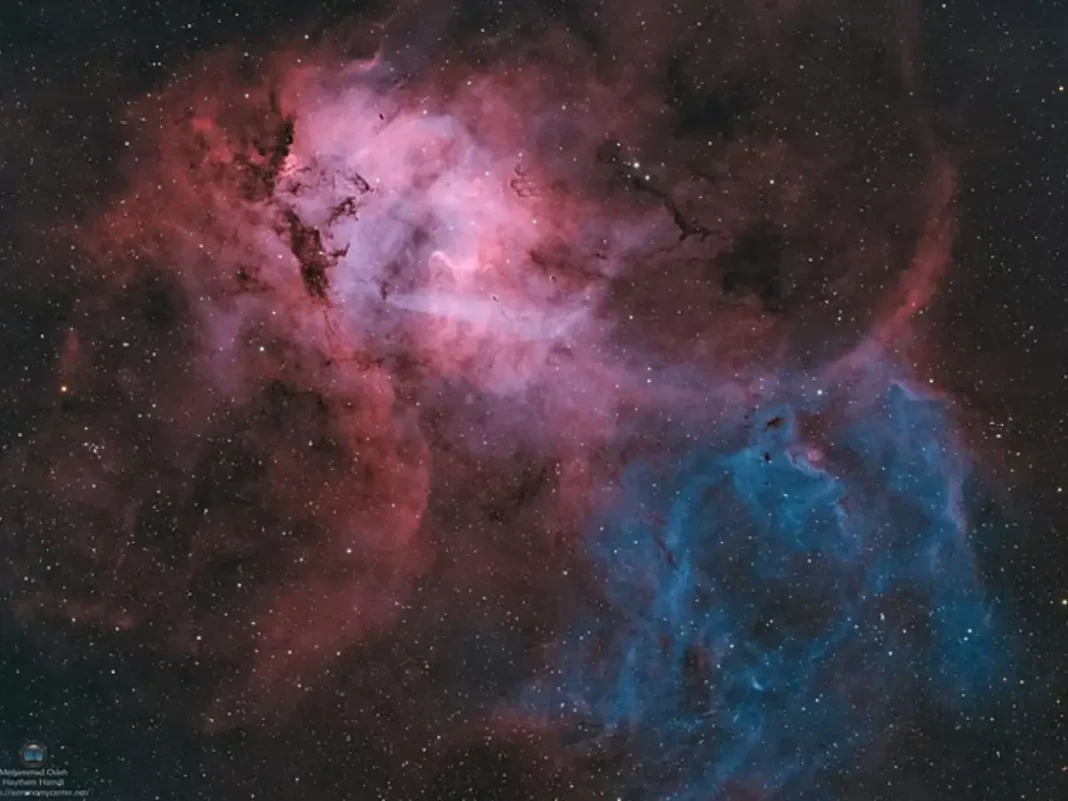Key Takeaways
- Abu Dhabi’s Al Khatim Observatory captured the Lion Nebula after a 32-hour imaging session.
- The nebula is 10,000 light-years away, with light beginning its journey around 8,000 BC.
- It spans 270 light-years and is illuminated by two massive stars 20 times heavier than the Sun.
An observatory in Abu Dhabi has successfully captured a breathtaking image of the Lion Nebula, a cosmic structure whose light travelled for 10,000 years to reach Earth. The Al Khatim Astronomical Observatory achieved this feat after a marathon 32-hour imaging session.
Unveiling the Cosmic Lion
The Lion Nebula resides in the constellation Cepheus, approximately 10,000 light-years from our planet. This vast cloud of gas and dust stretches an immense 270 light-years across. Researchers revealed that the light captured in this image began its journey from the nebula around 8,000 BC, taking 270 years just to cross the nebula’s own width.
What Creates the Nebula’s Colors?
The stunning picture shows gas particles ionised by intense ultraviolet radiation from two nearby stars, HD 21156 and HD 211853. These stellar giants are about 20 times more massive than our Sun. The vibrant red hues in the photograph represent ionised hydrogen, while the blue shades indicate ionised oxygen.
To enhance the image’s clarity, astronomers used a specialised optical filter to combat light pollution, bringing out the nebula’s intricate details.
UAE’s Growing Astrophotography Prowess
This achievement is part of a series of successful deep-space imaging projects from the region. Earlier this year, astrophotographers from the Emirates Astronomy Society (EAS) captured the Crescent Nebula in the Cygnus constellation.
UAE astronomers also collaborated internationally to photograph the M16 Nebula, popularly known as the Eagle Nebula. This famous cosmic formation, located 7,000 light-years away in the Serpens constellation, is best known for the “Pillars of Creation”—columns of gas and dust that serve as stellar nurseries for new stars.





